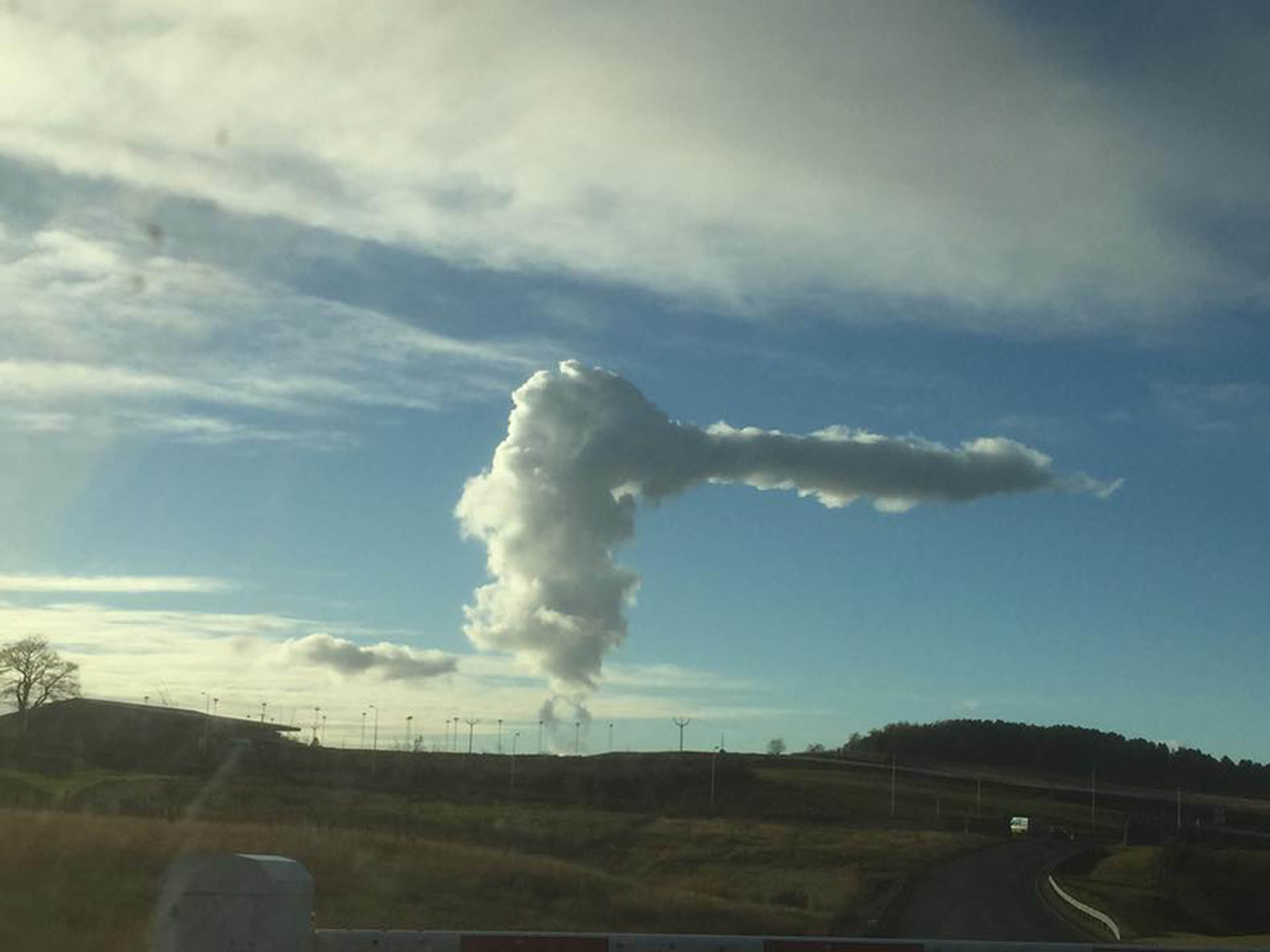SCOTLAND is in the grip of a widespread Thor – if a startling picture on social media is anything to go by.
The image shows a strange cloud formation that, according to some viewers, looks like the hammer of Thor.
The image, taken in Kirkcaldy, Fife, shows a long, thin “handle” connected to the much thicker “hammer”, which appears to be touching the ground.
But while some social media users speculate about Norse gods, others have a more down-to-earth explanation: fumes from the Mossmorran fuel plant, in nearby Cowdenbeath.
The image was posted on Facebook by Glasweigan David Shearer, with the caption: “Thor kicking around in Kirkcaldy?”
Social Facebook users agreed with him, with Beverly Allsup writing: “Suppose you should expect some thunder….”
But Maureen Ross then explained what she thought was the real reason for the clouds, writing: “Mossmorran pollution.”
Leanne Reid criticised her for spoiling the fun, replying: “And the no sense of humour award goes to”.

The Mossmorran natural gas liquids fractionation plant, around eight miles from Kirkcaldy is managed by multinational corporation ExxonMobil.
Gas is pumped to the plant after being seperated from oil on platforms in the North Sea.
In Norse mythology, the hammer of Thor, a major Norse god associated with thunder, is called the Mjölnir.
It is depicted in mythology as a fearsome weapons, capable of leveling mountains.
This is not the first time this year that a cloud formation has turned heads in Scotland.
Back in February, a rare type of shimmering cloud, called nacreous clouds, were seen all over the country.
Nacreous clouds are illuminated from below and glow in bright colours, leading to them often being labelled “mother of pearl” clouds.
More recently, in October, bright pink “anthropogenic”, or artificial, clouds were photographed around Forth Valley.
The clouds are believed to have come from the Ineos petrochemical plant in Grangemouth.
A spokesman for Ineos said at the time: “The clouds of water vapour most likely emanated from our cooling towers”